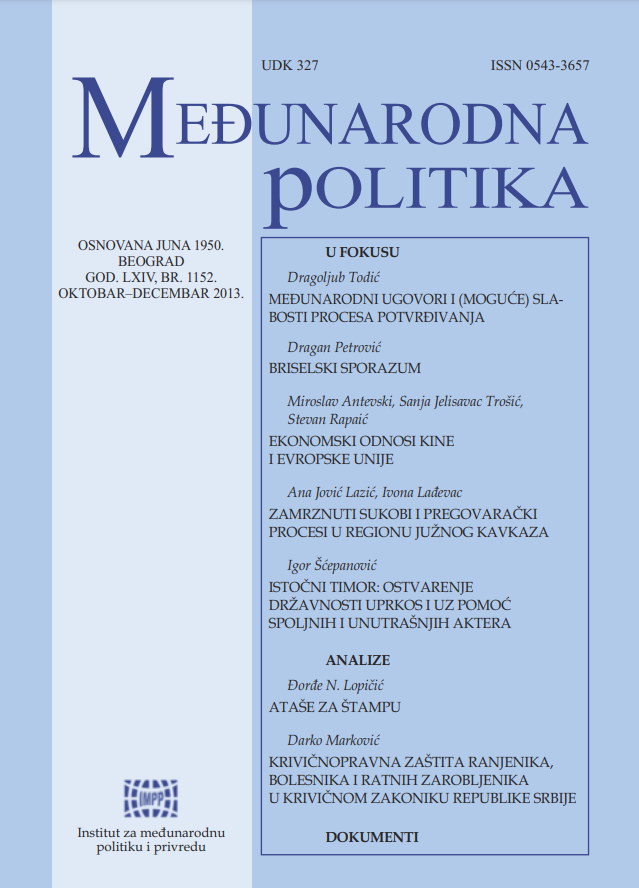Krivičnopravna zaštita ranjenika, bolesnika i ratnih zarobljenika u krivičnom zakoniku Republike Srbije
Criminal Law Protection of Wounded, Sick and Prisoners of Warin Criminal Code of the Republic of Serbia
Author(s): Darko MarkovićSubject(s): Law, Constitution, Jurisprudence
Published by: Институт за међународну политику и привреду
Keywords: wounded; criminal law; Serbia; prisoners of war
Summary/Abstract: A violation of war customs, disregard for the rights of war prisoners and wounded, as well as civilian population, is a problem that has existed since the formation of the first forms of social community, and the international community started dealing with this problem seriously after founding of the International Red Cross and Red Crescent Movement, soon after which appeared the first convention to protect these groups. The most comprehensive codification of these rules was made by congregating four Geneva Conventions for the Protection of War Victims of 1949, and supplemented with two Additional Protocols of 1977. FPRY, which Serbia was a member of, ratified in 1950 the Geneva Conventions of 1949 and in 1978 the Additional Protocols of 1977. Current Criminal code of Republic of Serbia11 (from 1st January 2006) deals with protection of rights guaranteed by ratified Geneva Conventions and Additional Protocols in Chapter XXXIV – Criminal offenses against humanity and other rights guaranteed by international law. In this Criminal Code it is more detailed than it was in the previous Criminal Code of the SFRJ12 – which is completely justified, and necessary, considering the experience from the civil war on the territory of former SFRJ. It is undeniable that the rights guaranteed by the Geneva Conventions and the Additional Protocols are also part of the being of criminal offenses against other rights related to humanity, and their criminal justice protection derives from some other conventions. In this paper, I will be concerning only with criminal offenses from our Criminal Code against wounded, sick and prisoners of war, and all that with purpose of understanding the term and characteristics of these criminal offenses more correctly, considering that theory of criminal offenses against this protected object is in the background giving advantage to genocide and criminal offense against humanity. With article 83 of Additional Protocol I and article 19 of Additional Protocol II, high contracting parties of these protocols and Geneva Conventions from 1949 were obligated to introduce regulations of these international acts to as much of civilian population and armed forces of country. In that sense, with this paper I wish to give a small contribution and help in understanding better the way the same were embedded in Criminal Code of Republic of Serbia.
Journal: Међународнa пoлитика
- Issue Year: 64/2013
- Issue No: 1152
- Page Range: 191-208
- Page Count: 18
- Language: Serbian

